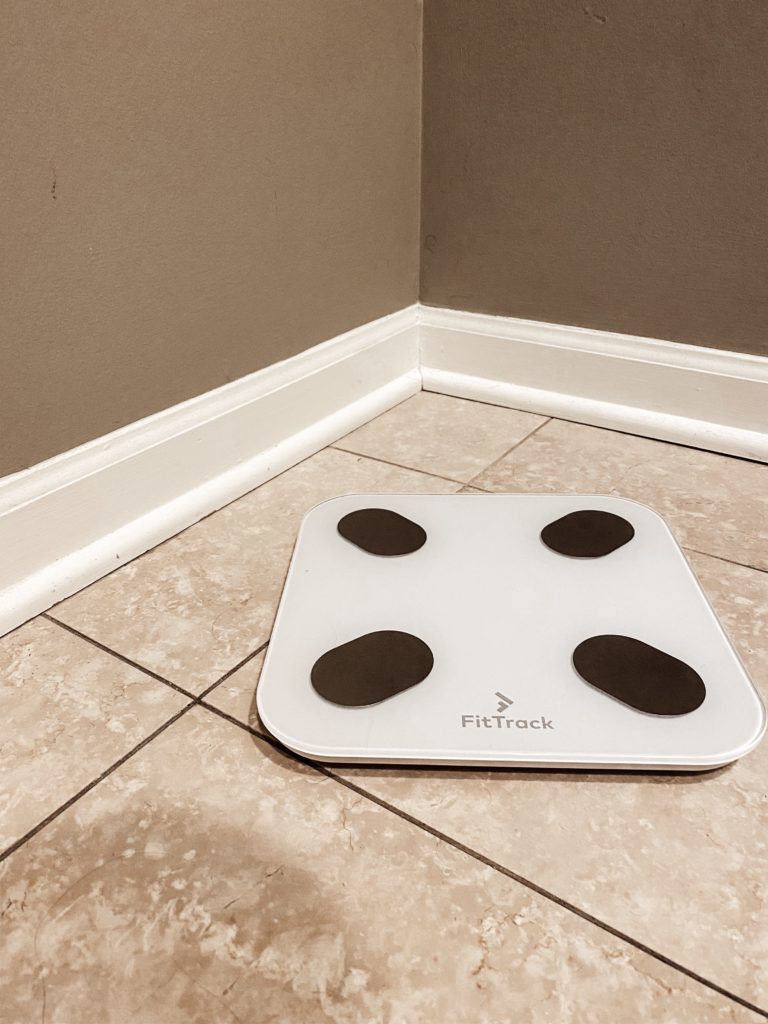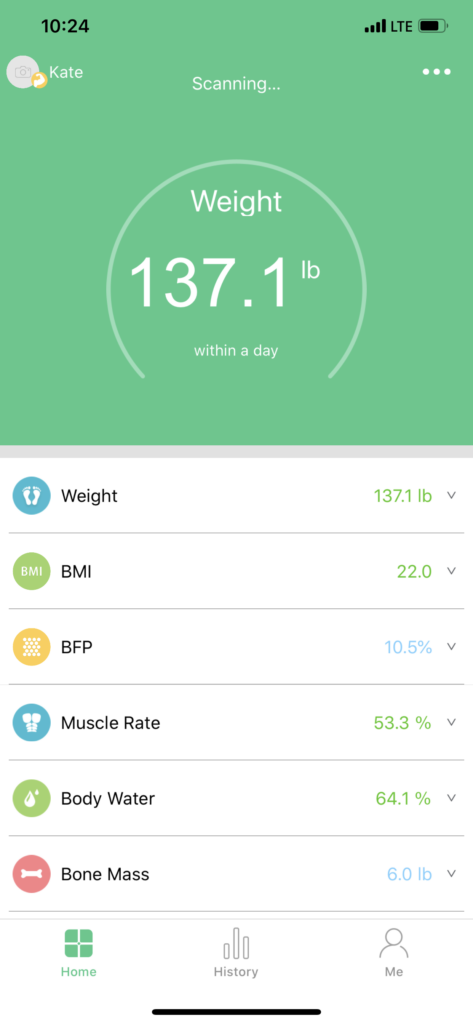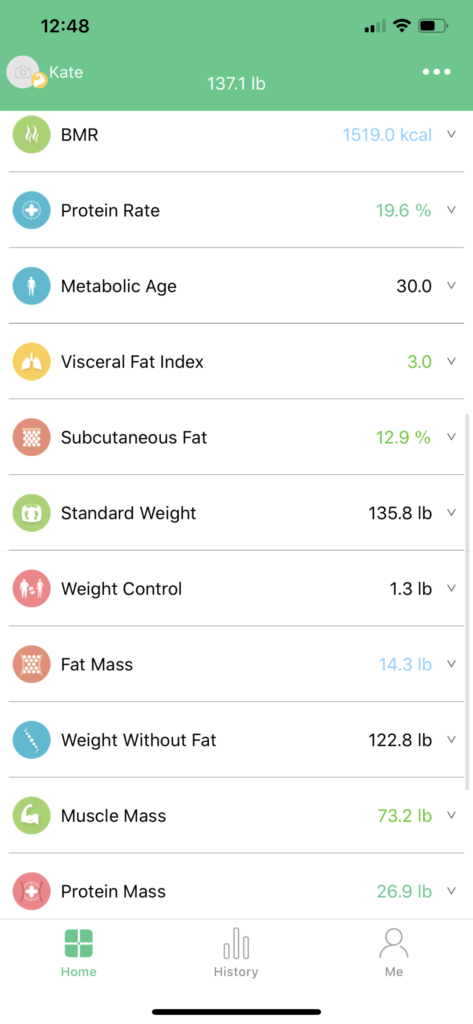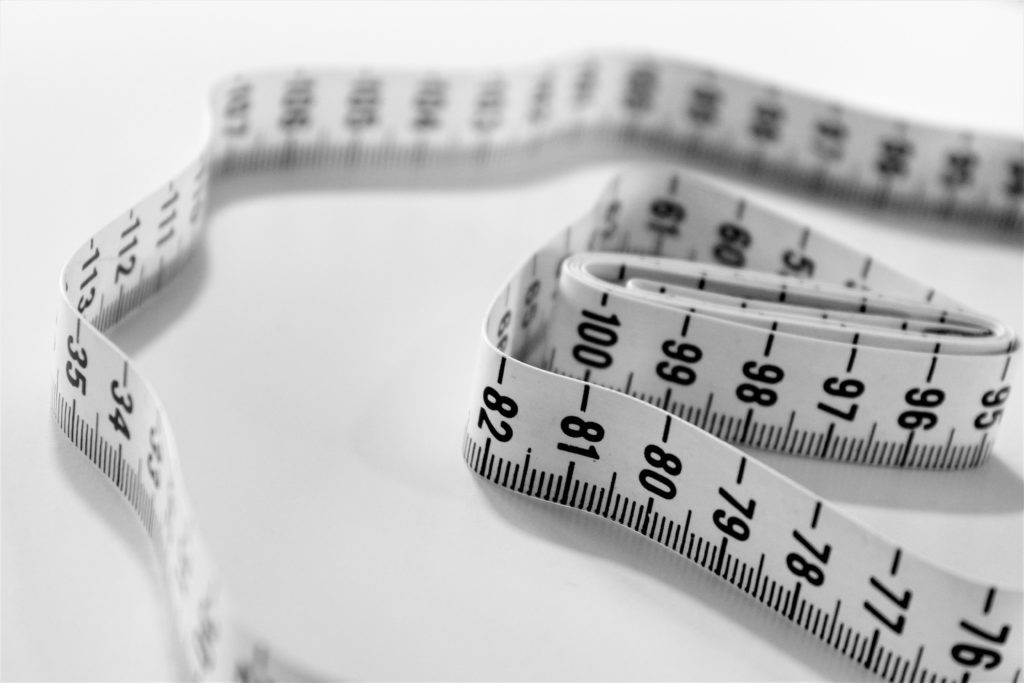Understanding, Monitoring, and Evaluating Body Composition

Scale weight carries A LOT OF WEIGHT – no pun intended. For many people, women especially, stepping onto a scale is mentally, physically, and emotionally exhausting. And while I don’t minimize the trauma that accumulates from years of consuming our disordered diet culture, I’d like to respectfully and sensitively say, stepping onto a scale does not have to be a dreadful experience.
Before I continue, I’d like to reiterate, as I have MANY times on this website and my social media if you are suffering from disordered eating or another psychological disorder surrounding body image or food, this is not the resource for you. Please seek the help and guidance from a licensed professional to help you work through your trauma, and provide you with the tools you need to heal. Additionally, there are other ways to measure weight loss progress other than scale weight alone.
I always feel better after I get that off my chest.
If you are part of the general population who is looking to reset their relationship with scale weight and tracking tools in general, read on for a detailed overview of how to understand, monitor, and evaluate your body composition.
Universal Truth: Your Scale Weight Will Fluctuate
Scale weight is influenced by a NUMBER of factors, most of which have nothing to do with fat loss or gain. And yet, when the scale tips at the end of the day, or a long weekend, many of us fall into a total tailspin. Know this; your scale weight will fluctuate daily. It will fluctuate HOURLY.
Reasons Why Your Weight Has Increased UNRELATED to Fat Gain
- You ate later in the evening, and weighed-in early in the morning
- Constipation
- Stress
- Sleep deprivation
- Muscle soreness, inflammation
- Water retention from increased intake of sodium or carbohydrates
Scale weight does NOT mean fat. So it’s essential to release the emotional hold we have on scale weight because SO many different factors can impact the number that pops up on the panel.
IMO, the best way to become less emotional is to become more educated. Understanding what makes us react and why at the deepest level is the best way to notice a feeling or reaction and let is pass. That truth applies to EVERYTHING in life.
If you take away ANYTHING from this post, let it be this section.
Tools for Monitoring and Evaluating Body Composition
My outlook on stepping on to a scale is the same as tracking calories. I don’t view it as obsessive behavior, but rather an educational tool. Looking at both as an output of data can help you become more objective in reaching your goals because you gain an understanding of what those numbers mean.
There are several ways to track and monitor body composition. Some are quick to perform; others require a lot of effort. Results can vary, too, ranging from the most basic to the most complex. Currently, the following methods are most frequently used in body composition testing:
- Skinfold Calipers
- Hydrostatic Weighing
- Dual Energy X-ray Absorptiometry (DEXA)
- Bioelectric Impedance Analysis (BIA)
I recently partnered with FitTrack, creator of the Dara Scale, which falls into the BIA category. This scale uses an electrical current to measure body composition, and I fahking love it. Use my code, KATE20, to take advantage of a special discount.
Here’s why:
- The data syncs to your phone, so there’s no reason to enter or track manually
- In addition to your daily measurements, you can also view your TOTAL average (so amazing)
- Each reading includes over fifteen data points for a comprehensive overview of your current situation and progress
When interpreted APPROPRIATELY, the data you collect can help you refine your process by knowing what works and what doesn’t, and it enables you to understand how your process translates to muscle growth, fat loss, or both.
A Word on Accuracy
Both Dual Energy X-ray Absorptiometry (DEXA) and Bioelectric Impedance Analysis (BIA) are valid tools for the assessments of body composition for the general population. Is 100% accuracy guaranteed? No. Will every method of assessment yield the same results? No. Will it match the data produced by the god knows how old and how used machine in your gym locker room? Probably not.
Are they accurate enough? Absolutely. If you start tracking with your Dara, use the Dara. Consistency is key to anything in life.
Understanding Body Composition
In regards to scale weight, after reading the above, you now know fluctuation no longer is something to fear. It is inevitable, and it’s not a bad thing. Take that knowledge one step further to include the make-up of your body composition.
Body composition is the method of measuring what your body is made of and how much. The body is made up of:
- Water (found in blood, muscle, fat, and bodily fluids)
- Protein (found in muscles, organs, bones)
- Minerals (contained in the bloodstream and inside bones)
- Fat (stored energy grouped into fat mass and fat-free mass)
To clarify the last component, let’s quickly define what fat is because our culture gives it a really bad rap.
- Fat-free mass refers to organs, skeletal muscle mass, body water
- Fat mass will store energy, protect organs and regulate body temperature
Fat is essential – like, we NEED it. So if you’re after a dangerously low amount, or are fixated on getting rid of it, think again.
The above will confirm there’s more to changing your body than merely losing and gaining weight. There’s a lot going on underneath the skin!! It’s fascinating.
Evaluating Body Composition
Data is useless unless you do something with it. You know?
When I lead a class at Barry’s Chicago, I am emersed in a holistic 360* experience of energy radiating off of 58 people all looking to better themselves. That experience is punctuated by flashing Apple watches. I watch people stop to start their watch, check the screen throughout my program, and stop them the second the final countdown ends.
To be said in my BEST Carrie Bradshaw voice, “I couldn’t help but wonder…what do these bishes do with the numbers that flood their brains. Do they go home, enter them into a spreadsheet, and evaluate both the qualitative and quantitative data while also considering the circumstance and environment in which that data was collected? Or do they judge the efficacy of their experience by said numbers whose accuracy and meaning they truly know nothing about?
I didn’t know. But I was determined to find out…”
My guess is the latter to NO fault of their own. We’re conditioned to rely on superficial numbers. But you can hold yourself to a higher standard.
When I’m looking at my FitTrack display, this is what I see:
And This is What it Means in Evaluating Body Composition:
Weight*
The total amount your ENTIRE body weighs from your hair, skin, teeth, nails, to your brain, liver, heart, lungs, and other organs, to your blood, bone marrow, and muscle tissue. EVERYTHING.
Body Mass Index (BMI)*
Primarily used to identifying obesity and body fat in large populations, but it’s kind of irrelevant for determining fatness in individuals. If you have a kid, it’s kind of like their growth chart. It documents the relationship between height and weight compared to everyone else. BMI is found by dividing your weight by the square of your height
Body Fat Percentage*
Body Fat Percent = Fat Mass / Total Weight. Or the amount of fat in your body in relation to everything else. I keep an eye on this metric when I’m cutting to ensure my fat is decreasing throughout a cut. Lost weight can include muscle, muscle, and more, so this is a metric I watch closely. Sure is slow to move tho!
Muscle Rate*
Or the amount of muscle in your body in relation to everything else. I keep an eye on this metric to understand if muscle growth or cannibalization is happening. You can lose weight and muscle at the same time, and that is NOT my goal.
Body Water*
As discussed above, your body water can be found inside not only in your blood, but in your muscle tissue, your body fat, your organs, and inside every cell in your body. The Dara scale will give a percentage of water weight in relation to everything else. Scale weight can increase if you’re retaining water, so I look at this metric if weight is up, and I’m SURE I’m adhering correctly.
Bone Mass
Bone volume, TBH, I never look at it!
Basal Metabolic Rate (BMR)
The number of calories your body burns just by existing. Like if you woke up but just laid in bed all day, your BMR would give insight into how many calories you’d burn.
If you need more evidence to support the superiority nature of strength training compared to any other protocol, consider this. Increasing muscle mass increases BMR. It takes more energy to grow and maintain more muscle, meaning when you have a lot of muscle mass, you’ll burn more calories at rest.
Tada.
Calculating your TDEE (total daily energy expenditure) requires knowing your BMR, but if you’re looking to understand how many calories you need to consume to eat, lose, or maintain weight, just click here.
Protein Rate and Protein Mass
The amount of protein (found in muscles, organs, bones) in relation to everything else.
Visceral Fat and Subcutaneous Fat and Fat Mass
Visceral fat is a type of body fat that’s stored within the abdominal cavity and around your organs and arteries. It increases your risk for developing severe long-term, life-threatening medical conditions, including:
- heart attacks and heart disease
- type 2 diabetes
- stroke
- breast cancer
- colorectal cancer
- Alzheimer’s disease
Subcutaneous fat is the fat that lives between the skin and the connective tissue – THIS is where cellulite lives, bishes. Decrease THIS fat, and you’ll minimize the appearance.
P.S. STOP BUYING LOTIONS THAT CLAIM TO REDUCE CELLULITE, THEY ARE A LOAD OF BULLSHIT, GOOD MARKETING THO!
Metabolic Age and Standard Weight
Again, kind of like your kid’s growth chart. You data, compared to EVERYONE else. Kind of fun, kind of irrelevant. Weight Control is the difference between the two.
Weight Without Fat
Exactly what it sounds like.
Muscle Mass
Weight of your muscle tissue.
*My key metrics.
In Conclusion
The lifecycle of a diet is slow, and while it should be steady over a month, two months, and three months and beyond, your progress will not be LINEAR. If your goal is to lose weight, you’ll start to notice a downward trend over time, and even the smallest of losses should fuel your fire.
But if you find yourself stuck, or in a plateau, there are productive and unproductive ways to troubleshoot.
Unproductive
- Beat yourself up
- Harbor an extreme sense of guilt
- Serve yourself self-talk
- Restrict
- Punish
- Detox
- Starve
- Deem yourself to be worthless and unlovable, etc
Productive
- Review your behavior, and get to the ROOT of your problems
- Understand your triggers causing you to miss adherence
- Get creative to find alternative solutions
- Remind yourself that none of this is URGENT you have your entire life to change your body
- Practice radical acceptance, you’re perfect as you are, and can love yourself while you still try to change
When your emotions are taken out of your experience, you can objectively look at behavior and trigger patterns. When you view yourself through an honest and nonjudgemental lens, you can pivot your approach, find different ways of execution, and identify and avoid barriers before they even arise. You live, and you learn. You do NOT have to stress, and you do NOT have to place your self-worth on a number. Any number.
To educate yourself, you have to get access to tools and resources that HELP you (not just tell you what to do). I rely on the Fittrack Dara scale, my food scale, and the Lose It calorie tracking app to help me understand my intake and adherence. I do not connect any to my self worth and worthiness, and I never forget there’s life outside the kitchen and the gym, and it’s pretty fahkin’ sweet.










THANK you for writing this!! I ordered the scale, used it for the first time this morning and then thought – What am i looking at!?
This article was very helpful in understanding what the scale is telling me.. THANK YOU
How do you use protein mass and protein rate data? Both of mine are low, despite upper end of standard muscle mass and rate #s. Also low visceral fat, upper end standard subcu fat. ????. Idk how to tweak nutrition based on these #s.